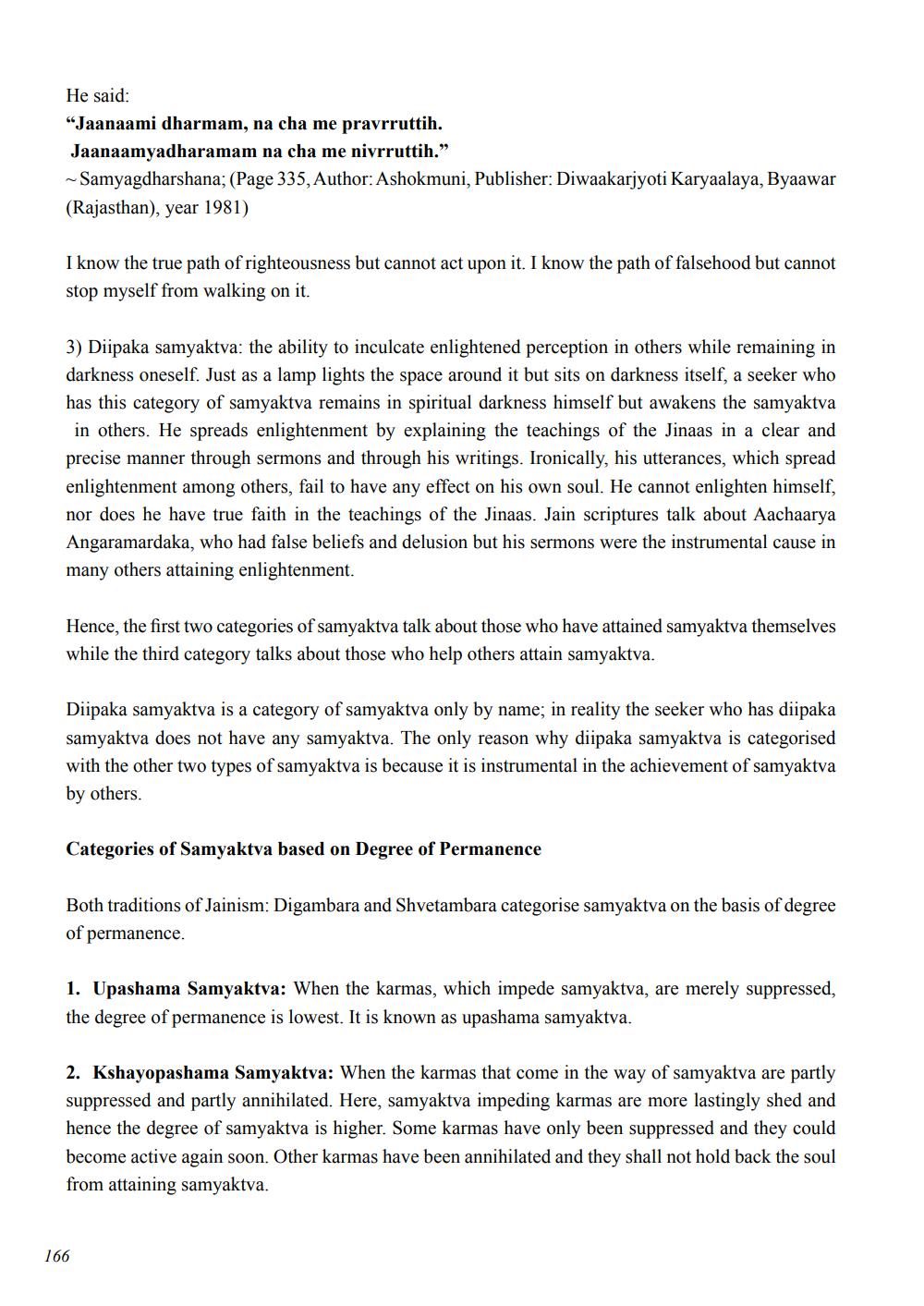________________
He said:
"Jaanaami dharmam, na cha me pravrruttih.
Jaanaamyadharamam na cha me nivrruttih."
-Samyagdharshana; (Page 335, Author: Ashokmuni, Publisher: Diwaakarjyoti Karyaalaya, Byaawar (Rajasthan), year 1981)
I know the true path of righteousness but cannot act upon it. I know the path of falsehood but cannot stop myself from walking on it.
3) Diipaka samyaktva: the ability to inculcate enlightened perception in others while remaining in darkness oneself. Just as a lamp lights the space around it but sits on darkness itself, a seeker who has this category of samyaktva remains in spiritual darkness himself but awakens the samyaktva in others. He spreads enlightenment by explaining the teachings of the Jinaas in a clear and precise manner through sermons and through his writings. Ironically, his utterances, which spread enlightenment among others, fail to have any effect on his own soul. He cannot enlighten himself, nor does he have true faith in the teachings of the Jinaas. Jain scriptures talk about Aachaarya Angaramardaka, who had false beliefs and delusion but his sermons were the instrumental cause in many others attaining enlightenment.
Hence, the first two categories of samyaktva talk about those who have attained samyaktva themselves while the third category talks about those who help others attain samyaktva.
Diipaka samyaktva is a category of samyaktva only by name; in reality the seeker who has diipaka samyaktva does not have any samyaktva. The only reason why diipaka samyaktva is categorised with the other two types of samyaktva is because it is instrumental in the achievement of samyaktva by others.
Categories of Samyaktva based on Degree of Permanence
Both traditions of Jainism; Digambara and Shvetambara categorise samyaktva on the basis of degree of permanence.
1. Upashama Samyaktva: When the karmas, which impede samyaktva, are merely suppressed, the degree of permanence is lowest. It is known as upashama samyaktva.
2. Kshayopashama Samyaktva: When the karmas that come in the way of samyaktva are partly suppressed and partly annihilated. Here, samyaktva impeding karmas are more lastingly shed and hence the degree of samyaktva is higher. Some karmas have only been suppressed and they could become active again soon. Other karmas have been annihilated and they shall not hold back the soul from attaining samyaktva.
166




